How to Hang Curtains Like an Interior Designer

By Hannah Twietmeyer
Windows are one of a room’s greatest assets. Natural light can create an unmatched ambiance, and a daily dose of Vitamin D is welcomed especially during the winter months when it’s too cold to step outside.
Although there are sights to see, fresh air to let in, and sunlight to hang on to before evening sets in, having windows in your room means you should accessorize accordingly. Curtains not only add the finishing touch to your interior design vision, but they also are a simple way to create an element of privacy in your home. That, and they block sunlight if it gets too harsh.
Hanging curtains doesn’t have to be a daunting task, either. With the right tools, products, and ambition, you can dress your windows up just right. We’ll walk you through every step on how to hang curtains in your home.
Photo via Shandy
How to Measure Curtains
The right curtain length and width play a huge part in improving the look of a room—if done right, both can make ceilings appear higher and windows look bigger. You may know the measurements of your windows, but don’t use those specific numbers for your curtain dimensions.
Curtain Rod Width
Equally as important as determining the right curtain length and width is doing so for the curtain rod itself. This piece of hardware can make or break the entire drapery setup.
When choosing a curtain rod, first consider the material that suits your design vision—wood, brass, and iron are just a few options. Most curtain rods come in about 1-3 inch diameters, which is a standard measurement that should fit through most curtain eyelets or fabric loops. As with the curtain width, which we discuss below, you’ll want to select a rod that is actually wider than the total width of the window you’re dressing. Whether you purchase a rod that’s already wider than your window or opt for an extendable rod to reach that width, you’ll want to make sure that it extends beyond the window frame a few inches on each side.
Curtain Length
Curtains usually come in three standard lengths—63 inches, 84 inches, 96 inches, and 108 inches. What length you decide to purchase depends on personal preference as well as some more measurements. Consider how high above the top of your windows you’re looking to mount your curtain rod, how far above the floor you’d like the curtains to hang, or if you’d like them to gather on the floor instead.
How high you mount a curtain rod above your window depends, again, on personal preference, but aside from complementing your windows, keep in mind that curtains function to block sunlight. So, choosing a length shorter than your actual window measurements takes away the curtains’ purpose. A general rule of thumb is to play it safe by mounting the curtain rod between two and four inches above your window. That way, you’re sure to cover the tops of your windows without risking any sunlight leaking through.
Curtain Width
Even when a set of curtains is closed shut over a window, they should still look rippled and have some slack left over. This means opting for a curtain set with a combined width that is two to three inches longer than the width of your window.
Types of Curtains to Consider
The window treatments you end up choosing for your home should be aesthetically pleasing as well as functional. Living room curtains, for example, might be sheer, while bedroom or home office curtains might be made of a heavier material for privacy and sun blockage. After calculating the curtain sizes that work best for your room, consider the types of curtains that will best suit your needs. Here are a few to look at:
Linen
This fabric isn’t just for beachy clothing. The airy, light composition of linen can give your room a casual and natural feel, and the fabric is quite sheer, meaning it won’t really block sunlight.
Polyester
This fabric is often a popular choice for drapery due to its durability and cost. These curtains are usually thick and recommended for first-time homebuyers because they’re affordable and require low maintenance care.
Silk
Curtains that are made of silk require more technical maintenance than other fabrics since this fabric is dry-clean only. Still, their romantic elegance is undeniable, and they drape well.
Blackout
No sleep mask needed here—as their name suggests, blackout curtains are designed to keep light out. These curtains are made with an opaque fabric that is backed by a layer of foam, making them perfect for bedrooms (especially in rooms of children who take daytime naps).
Cotton
Curtains made of cotton can suit both casual and formal looks. Cotton can come in a variety of thicknesses. For blocking sunlight, opt for a tightly woven product. If you’d like to let some sunlight in, sheer cotton curtains are also popular.
Thermal
As the name implies, curtains made of thermal fabric are thick and designed to help insulate rooms that may be located in chillier regions.
Lace
For optimal frills and design, lace curtains are a stylish option. They diffuse light rather than block it, so they are more for looks than they are functional.
Velvet
Thick and formal, velvet curtains are as much a room accent as they are functional. They are heavier than a lot of other competing fabrics, but they’re opaque, so blocking sunlight and providing insulation is guaranteed.
Photo via Jessica @ Decor Adventures
How to Hang Curtains
Assembling the right materials for your curtain-hanging ordeal is key for a smooth project. While setting up curtains isn’t the most complicated of tasks, it can be if you’re missing tools or don’t have the correct hardware, which also puts you at risk of ruining your drywall. Before you get started, we recommend taking inventory of the following items listed below.
Tools and Materials Needed
- Stud finder
- Ladder or step stool
- Pencil
- Tape measure
- Wall anchors (optional)
- Power drill and drill bit
- Level
- Hardware for the curtain rod; usually included with the purchase of a curtain rod, but double-check to make sure you have brackets and screws that will hold the rod if not.
- Curtains
- Curtain rod
- Curtain clips (optional)
- Iron or steamer
After you’ve got your measurements figured out (see “How to Measure Curtains” above), follow these steps to hang your curtain rods and attach your curtains.
Step 1: Locate Wall Studs
Studs are essentially supporting beams in your house’s frame, and locating them is a must when hanging heavier items on your wall. When mounting a curtain rod, floating shelf, or anything that is heavy enough to require extra support, you’ll want to make sure you position it in the same location as a stud. Otherwise, you risk damaging your drywall if the object you’re mounting is too heavy for your wall to support.
Using a stud finder, locate the areas where studs are in place above your window, and mark off the places where you’ll install the curtain rod brackets with a pencil. Use a tape measure to calculate the distance between where the curtain rod’s brackets will go. If the area you’re looking to mount your curtain rod on doesn’t have a stud, you will need to drill wall anchors first to support the brackets so they don’t rip out your drywall with the weight of your drapery.
Step 2: Drill Brackets
You might be tempted to “eyeball” the heights at which you’ll install the curtain rod brackets, but it’s important that you don’t. Once you’ve determined where the studs in your wall are, mark off the areas where you’ll install the brackets using a pencil and level—you don’t want your curtain rod to be crooked! Line up the screws with the appropriate bracket holes, and secure them to the wall using a drill. We even suggest using a level again to double-check the locations of the brackets and make sure that they’re installed at even heights.
Step 3: Prepare Curtains
Make sure your curtains are steamed, ironed, and wrinkle-free before threading the curtain rod through the eyelets—you want them to hang flawlessly. If the curtain rod won’t fit through the holes in your curtains, pick up curtain clips, which will hold a curtain up using clips. Work slowly; it’s okay to be a perfectionist here, because once the curtains are up, it will be a hassle to take them back off if you missed a spot.
Step 4: Mount Curtain Rod
Once the curtains are assembled on the rod, you’re ready to place the curtain rod in the brackets you mounted in the wall. Do so gently, and then step back to admire all your hard work and newly-dressed window!
Photo via Abbey D
How to Hang Curtains in a Bay Window
Hanging window treatments in bay windows is a slightly more complex task, but it’s nothing you can’t do with the right research. Bay windows are gorgeous design accents, and adding drapery to them only makes them that much more of a statement. Although the process for installing curtains and curtain rods for bay windows is similar to the normal process mentioned above, you will likely need special rods.
Here are some equipment options to consider:
Straight Curtain Rods
This is the same step-by-step process mentioned above, only you’ll need several sets of curtain rods—one will need to be installed above each straight section of your bay window.
Bay Window Curtain Rod
Traditionally, bay windows are three-sided. If you have one in your home, you can install a bay window curtain rod, just like this one from Amazon, with adjustable lengths. Bay window curtain rods are essentially three separate curtain rods connected by flexible “elbows”. A bay window curtain rod is installed just like a straight curtain rod.
Flexible Curtain Track
Along with being installed on the wall space above your window, curtain tracks can also be installed on the ceiling. To install a curtain track on your ceiling, first assemble the track on your floor following the product instructions. You will need to find studs in the ceiling and mark the locations with a pencil. Install the ceiling mounts, and hang your curtains (via Home Depot).
Install Tension Rods
These curtain rods are often used to hang shower curtains between walls but work well for windows, too. They require minimal installation and set up on the inside of your window between the frames. Tension rods are great for curtaining a bay window on a budget and if you’re going for a minimalist look. Here is a popular tension rod option from Amazon.
How to Hang Curtains in an Arched Window
Arched windows are a beautiful design whose look is usually meant to be featured, instead of covered with curtains. Instead of using curtains over arched windows, most designers hang valances, gathered curtains, or scarves across the top arch only as decoration, not to eliminate sunlight.
If you truly want to curtain-up arched windows in your home, you can opt for custom-made rods and window treatments that cater specifically to the curve or your arched window. But, if you’re looking to do a DIY installation on a budget, consider hanging a straight curtain rod across your window. While this won’t cover the entirety of your arched window, it is a good trick to keep in mind if you’re okay with covering about two-thirds and want to keep the arch design exposed. Install a straight curtain rod just under the top third of your window, so it’s mounted across the area where the curved arch and vertical edges meet. Or you can go ahead and hang the straight rod on your wall like normal, several inches above the top of the window arch—this will cover the entire window and snuff out light coming through the glass. Hang curtains like usual, and you’re good to go.
You can also custom-create treatments at home. Install decorative knobs along the wall area above your window, following the curve of the window’s arch. Then, attach your curtain with clips or DIY-sewn holes. They should hang down and cover the entirety of your window if the curtains are long enough, and you can gather them with decorative rope or by installing hooks on either side of your window frame.
Common Mistakes People Make When Hanging Curtains
Now that you know the ins and outs of choosing and hanging your own curtains, here’s a quick review of common mistakes you should note before you head to the store and pick up supplies:
Choose the Wrong Curtain Length
This comes with measuring your windows properly. Make sure you have enough fabric to achieve the look that you’re going for, whether that’s hanging just below the windowsill or pooling on the floor.
Choose the Wrong Fabric
Again, this is based on personal preference as much as it is functionality, but ask yourself why you actually want to install curtains. If it’s to keep a room dark, choose a thicker fabric. If it’s purely for looks, opt for something sheer or decorative that fits your style.
Install a Curtain Rod in a Studless Spot Without Anchors
If you’re hanging brackets sans wall studs, be advised that you will need wall anchors. The weight of your curtain rod—and the curtains themselves—could be enough to rip the brackets from the wall and destroy your drywall.
Skimp on Hardware
If you’re designing a drapery look to last, invest in hardware that will allow it to. The same goes for your curtains of choice.
Don't Prep Curtains Before Hanging Them
We briefly mentioned ironing out your curtains above, but this is a step you should not skip. If you want your window treatments to look professional, show them some TLC before mounting them up on the wall.
Are you a curtain-hanging pro that has some must-know tips? Share them below in the comments!




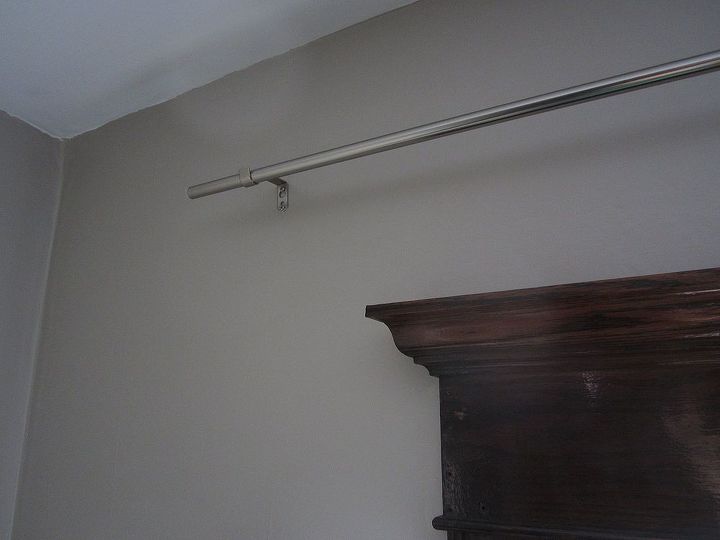

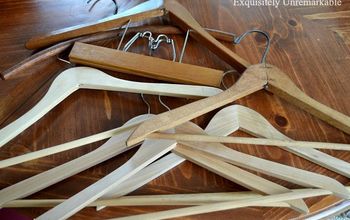



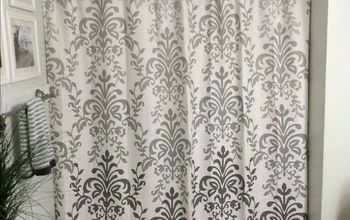
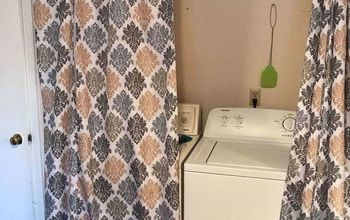



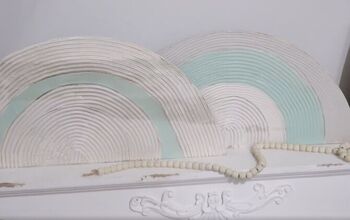








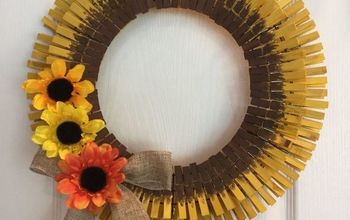

Frequently asked questions
Have a question about this project?
what is the total price?
What about hanging curtains very close to the ceiling , I think this would help my wall seem higher